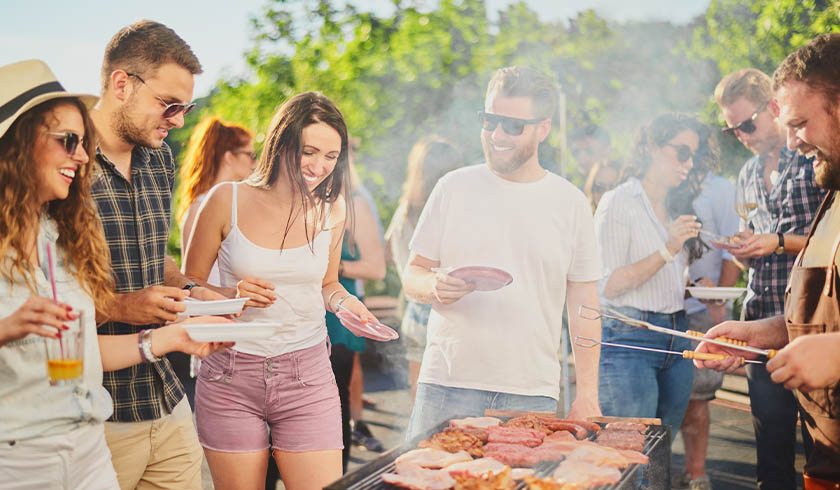Top tips to keep your property safe this summer
With the festive cheer well and truly alive, some property owners may be inadvertently setting themselves up for a hazardous situation. Here’s how you can ensure yours is secure.

WA Building and Energy has issued a summer safety reminder, issuing its top tips while using gas, electricity, roof spaces and items attached to building structures. For those with Christmas lights, the company has also imparted some words of wisdom.
Building and Energy A/Executive Director Saj Abdoolakhan said it’s important for people to ensure that their interior and exterior festive lights are safe, in good working order and compliant with Australian standards.
“Damaged or incorrectly used lights can cause electric shocks and fires,” he said.
“Like all electrical equipment and appliances, Christmas lights must meet safety standards and require Australian certification. Look for authentic regulatory compliance symbols and be wary about purchasing lights from overseas as they may not comply.”
Mr Abdoolakhan gave the following advice: “Check that the lights, cords and plugs are undamaged, untangled and working well, particularly if they have been in storage; ensure lights, extension leads and power boards are suitable for the intended use, including indoor or outdoor placement; check that the plug has insulated pins, which have a protective cover at the base of the pin below the metal tip; follow the manufacturer’s instructions and do not alter or modify the lights; turn off power points or light switches before replacing bulbs; switch off the Christmas lights before going to bed or leaving your house; and test your home’s residual current devices to make sure they are working”.
Safe grilling
When it comes to barbecue safety, Mr Abdoolakhan said that incorrectly maintained gas barbecues could cause fires, injuries and property damage – but simple checks could help reduce the risks.
“Check the hose for cracks, kinks or flaws that could result in a gas leak,” he advised.
“We also suggest spraying a solution of household detergent and water on all the exposed joints and connections. If bubbles appear, there is a gas leak.”
The executive director also advised home owners and tenants to look for a label on the barbecue showing its Australian safety certification and a stamp on the gas cylinder indicating when it was last tested – if this was more than 10 years ago, it should be replaced or retested, he said.
“Regular cleaning also reduces fire risks from built-up grease and oil,” Mr Abdoolakhan added.
“If there are any concerns with your barbecue, turn off the gas immediately and arrange for the faulty component to be replaced or repaired by a licensed gas fitter.”
Roof space hazard
With the holiday season being a popular time for DIY projects, Mr Abdoolakhan is urging people to be particularly cautious about electrical hazards in roof spaces.
“DIY electrical work is illegal and extremely dangerous, so always use a licensed electrical contractor,” he said.
“If you must access the roof space for another reason, it is vital that the electricity supply to the house is turned off at the main switchboard before you go up.
“The wiring in the roof space may have damaged insulation or exposed live parts, or you may accidentally dislodge other components, risking electric shock and possible electrocution.
“If you see any damaged or bare wires, call your licensed electrical contractor immediately.”
Hammocks, swings and basketball hoops
What do these three all have in common? They are a potential hazard waiting to happen.
According to Mr Abdoolakhan, consumers should be cautious about how and where equipment such as hammocks, swings, hanging chairs, shade-sails and basketball hoops are installed, noting that items like these should only be used if the supporting structure – including brick piers, walls, roofs, ceilings and beams – could handle the weight and loads.
“Structures at your home are not necessarily designed to carry additional attachments,” he said.
“Isolated brick piers, for example, are primarily designed to carry vertical loads from above. They should not be retrofitted with items that may pull or push the pier sideways or off-centre, such as a hammock.
“Sometimes it’s hard to tell if a building element is strong enough to support the item you are thinking of attaching. If in doubt, don’t risk it.”
The manufacturer’s instructions should also be followed when installing items, Mr Abdoolakhan added.
“Some goods, such as basketball rings and backboards, must have instructions provided about safe installation and use.
“You should also consider getting expert advice on the safe installation and use of any item attached to a structure.”

